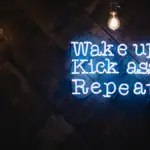We all need a little space for creativity. The trouble is, it’s not always easy to find.
Whether you work in a cubicle, in an open-plan office, or in the basement of your home, these tips on how to find and cultivate space for creativity will help your mind wander towards ways you can inject some inspiration into your workspace.
[divider width=”full”]
Recommended Reading:
- How to Increase Personal Productivity in the Workplace: 11 Tips to Help You Accomplish More by Doing Less
- Why Is It Good To Have a Positive Mindset? 14 Good Reasons Why
- Get Rid of Negative Thoughts: How to Cleanse Your Mind from Negativity
[divider width=”full”]
How important is it to establish a creative environment?
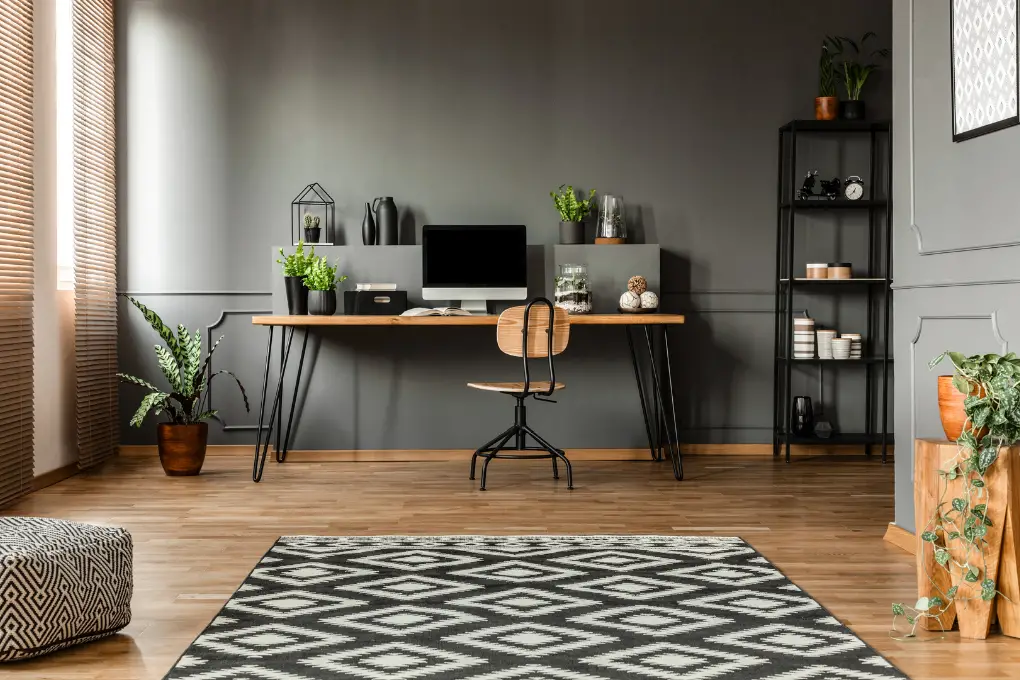
It’s no secret that our environment influences us greatly. The way we feel about ourselves and others, our moods, even our health – are all affected by what surrounds us. And this includes the physical space where we spend most of our time in.
In the words of Winston Churchill, “We shape our buildings, and afterwards our buildings shape us.”
As an architect, I know that the physical environment can be a powerful motivator (or demotivator). In architecture school, we were taught that any physical space could influence our mood and productivity. And get this: it can impact your creative potential as well.
In fact, according to this book published by the Cambridge University Press, the surrounding areas and the environment we’re in can have a considerable impact on our ability to be creative. The proponents behind this study are exploring three factors that might have a hand in this, and these are functionality, meaning, and mood. But this is a topic for another day.
The point is the right environment is vital to creative thinking; The question is: what does it take to make a space a hub for creativity?
More importantly, what can you do about your existing work area? Can you make small changes to your space and make it more conducive to creative thinking?
Read on to find out.
The Psychology of Space
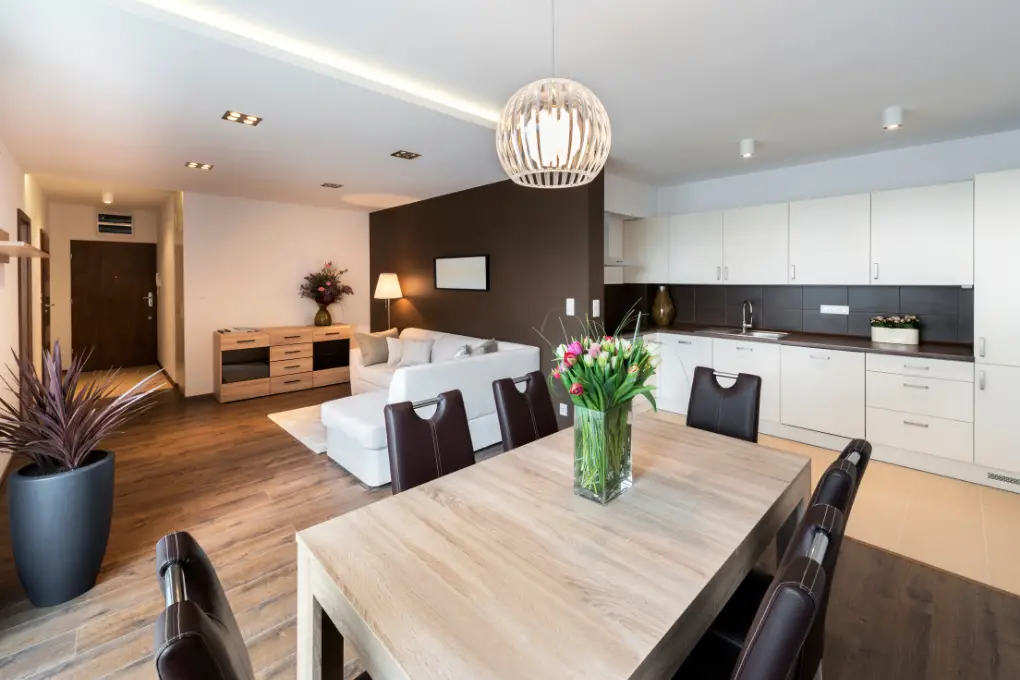
If you’re an architect, an interior designer, or any other professional who works with the physical space and the built environment, you should know by now that psychology plays a massive role in our perception of space. And our perception of space somehow influences our behavior and the way we navigate our way inside it.
The colors, lighting, configuration, textures, acoustics, and so on – all these contribute to our overall perception of space. They all work together to influence our subconscious minds and work toward our emotions and mood.
To give you an example, try to think about the last time you saw a cluttered room. How did it make you feel?
If you’re like most people, you might have felt a little anxious or uncomfortable. You probably thought the room looked small when in reality, it’s bigger than you think.
Let’s try another one.
Try to think about the first time you entered a room that was entirely painted bright yellow. You were probably shocked to see it… probably made you uncomfortable, even.
Or, let’s try this:
How did you feel when you first entered an enclosed Zen garden?
If you’re like me, you must have felt relaxed – as if your sorrows are melting away at that exact moment.
It’s often said that “the way we think is influenced by our surroundings” – and that is often true. The same could be said about the way we create.
That’s why, if you want to be as creative and as productive as you like, you need to start with developing a space that will allow you to do so.
Is it possible for me to make space for creativity?
The answer is yes.
Yes, you can improve your work area to make space for creativity.
Thankfully, there are several ways you can do exactly that. And the best part? It doesn’t take much to do so.
Tips on how to make space for creativity
I, for one, personally believe that everyone has creative potential. The only issue is that many of us didn’t have the time or capacity to nurture our creative abilities.
But the good news is it’s never too late. You can still harness your creative thinking skills, and you can start by making space for creativity. Here are my top tips on how you can do so:
1. You need to have a dedicated creative workspace.
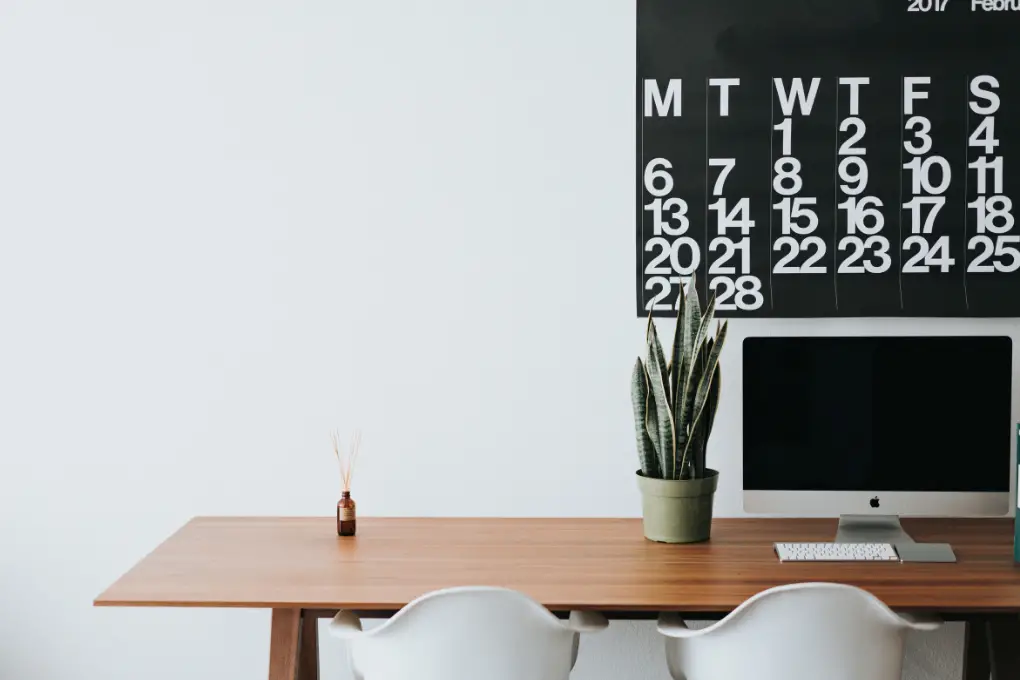
Your creative workspace doesn’t have to be a large room. In fact, it doesn’t even have to be an entire room dedicated to work. You’re free to use a desk, where you can concentrate and focus on your work and creative efforts.
But the thing is, you need to make sure that this space is off-limits to things and tasks other than your creative work. In other words, if that workspace is where you write, you can’t also use it for watching TV or playing video games.
Because once you do, you’re at risk of transforming your workspace into just like any other space – a space for everything else EXCEPT creativity.
So, if you want to make space for creativity, guard your workspace like a hawk. Don’t allow other tasks unrelated to your work to encroach on your creative space.
2. Keep your creative workspace clean and uncluttered.
A cluttered desk is a sign of a cluttered mind.
If you have too many things cluttered on your work desk, your subconscious mind will start working on ways to navigate throughout a cluttered workspace. And believe me, you wouldn’t want this to happen every single day.
Because the thing is, you only have so much brainpower to dedicate to your creative efforts. And if your mind starts working in full gear even you haven’t started on your creative tasks; then you’re wasting your time.
So keep your desk tidy. Keep it free from clutter. And make sure that you can easily access all the tools you need for your creative activities.
That way, you can save up your creative energy for more important matters – like writing down some ideas or brainstorming about how to improve something in your life – and not having to navigate through a messy desk.
3. Let nature in.

It’s no secret that nature can help with our well-being. But did you know that natural light, alongside other natural elements, can help boost our productivity and creativity by 15%?
In a recent study, biophilic space designs (designs that allow us to feel closer to nature) can positively impact our well-being, creativity, and productivity.
Of course, this doesn’t mean that you should take your work outdoors just to be regularly in touch with nature – though you could most certainly do that if you can.
Most of us don’t have that luxury, though, but we could take nature indoors.
I know you’re wondering how, so here are a few things you can do to make your space become a bit more “biophilic”:
- Let natural light in by opening a few windows.
- Make sure that your workspace circulates fresh air all day long.
- Keep a living plant or two beside your work area.
- If your workspace allows, open windows that overlook beautiful scenery.
- Try listening to ambient music when working.
- If your windows don’t have a wonderful view, compensate by keeping a few photos that remind you of nature. It could be a gorgeous photograph of a beach, a forest, or a magnificent lake.
4. Choose colors very carefully.
Like I said earlier, the right colors can evoke the perfect mood for creativity. However, the wrong ones can disrupt your creative flow and even lead to a creative block.
I’m not saying that you should avoid bright colors, such as yellow. But you need to think things through.
Also, bear in mind that there are different shades to each hue. So if you’d like to go for a yellow scheme, you can play around with varying shades of yellow to come up with the perfect color scheme that works for you.
Unfortunately, there isn’t a one-size-fits-all kind of guide when it comes to choosing the perfect colors for your workspace. But if you’re interested in learning more about colors and color psychology, you might want to start with this book.
5. Choose a space that evokes freedom.
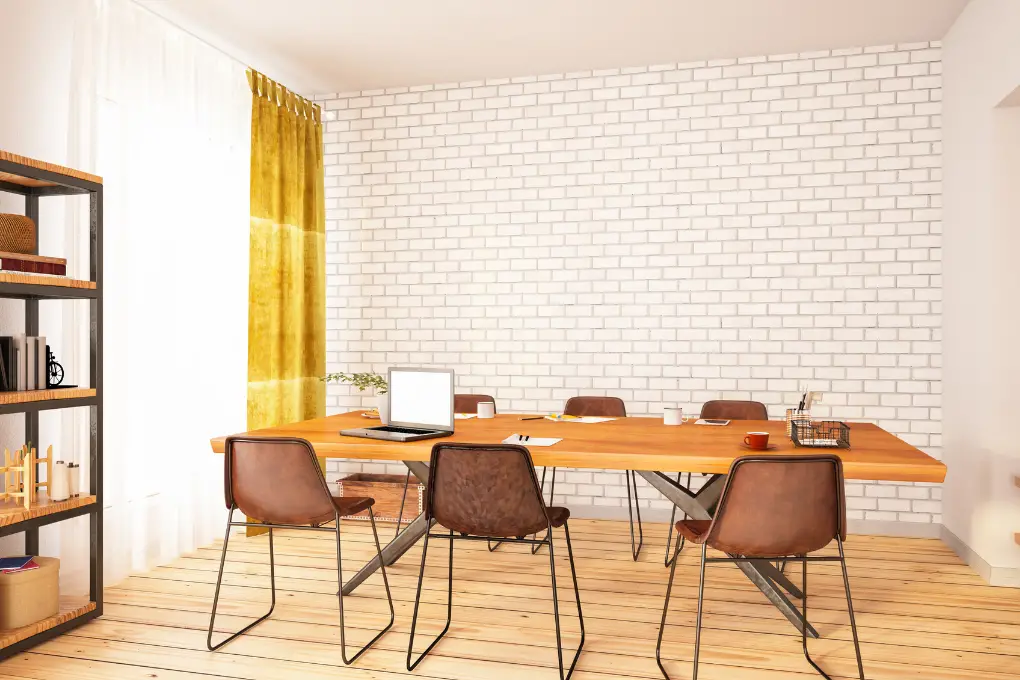
Did you know that the feeling of being free actually contributes to your creativity?
At least, that’s what this study tells us.
According to the study, “Freedom” seems like a core characteristic of creativity. In other words, if a person feels free, then he’s more likely to feel more driven to become more creative.
So how does this translate to workspace design?
It’s simple. Your space must evoke a sense of freedom, and you can do that by making your space look and feel bigger. And that means keeping it organized (so you won’t see too many things occupying your space).
And if your room is small, you could create an illusion of a bigger space by using light colors instead of dark ones.
And if you have the resources, a room with a high ceiling and high windows could do wonders for your creativity. These are just some of the elements that could help you feel free.
You can do a few more things with your space to make it look bigger. I suggest you check this out for more tips and tricks.
6. Keep decor to a minimum.
Certain decors can help us feel inspired and motivated to work.
Decors are great, but too many of these things can potentially hamper your creativity.
Because sometimes, our brains process extra things as clutter and distractions. Unfortunately, it doesn’t make any exceptions for excess decor.
So, if you want to constantly feel inspired to work, keep your trinkets and decor to a minimum.
[divider width=”full”]
Recommended Reading:
- How to Forgive Yourself for Wasting Time (for Better Productivity & Time Management)
- 18 Reasons Why Are Goals Important And Other Things You Need to Know About Effective Goal-Setting
- Best Books on Creativity: 13 Must-Read Books On Creativity for 2022
[divider width=”full”]
7. Make your workspace as flexible as possible.

I’ll be honest with you. Creativity can become elusive if you keep yourself in a space that barely changes at all. That’s why it pays to rearrange some things in your workspace every once in a while.
I know that if you have an entire room as a creative space for yourself, it can get overwhelming to move things around. But if you want to make your room as flexible as possible, you can replace your existing furniture with light and modular ones, like this, this, and this.
And if you have enough resources, you also have the option to add those pieces that offer multi-functionality – like this coffee table that you can also use as a desk; or this floating desk and storage that you can fold whenever you’re not using it.
But if you want to start small, you can change a few things in your workspace. For instance, you can change the curtains every couple of months or add a few colorful throw pillows as decor. Adding new photos of beautiful landscapes can do wonders for your creative space as well.
8. Make your creative space as comfortable as possible.
Let’s face it: who likes working in a space that’s not comfortable at all?
I know I don’t, and I know for sure – neither do you!
If you want to stay productive, you should never sacrifice comfort. That’s why it’s essential to ensure that your workspace has everything you need to stay comfortable and relaxed.
You can do so by adding a cozy blanket, a comfy and ergonomic work chair, a desk lamp, and maybe even a footrest. You may also want to invest in a nice rug that would cover up any hard surfaces. This way, you wouldn’t have to worry about tripping over them.
You may also use a standing desk to give you a boost when you’re feeling tired. Standing desks are becoming increasingly popular because they allow you to sit less throughout the day, which helps reduce back pain and other health issues.
9. Do trial and error.
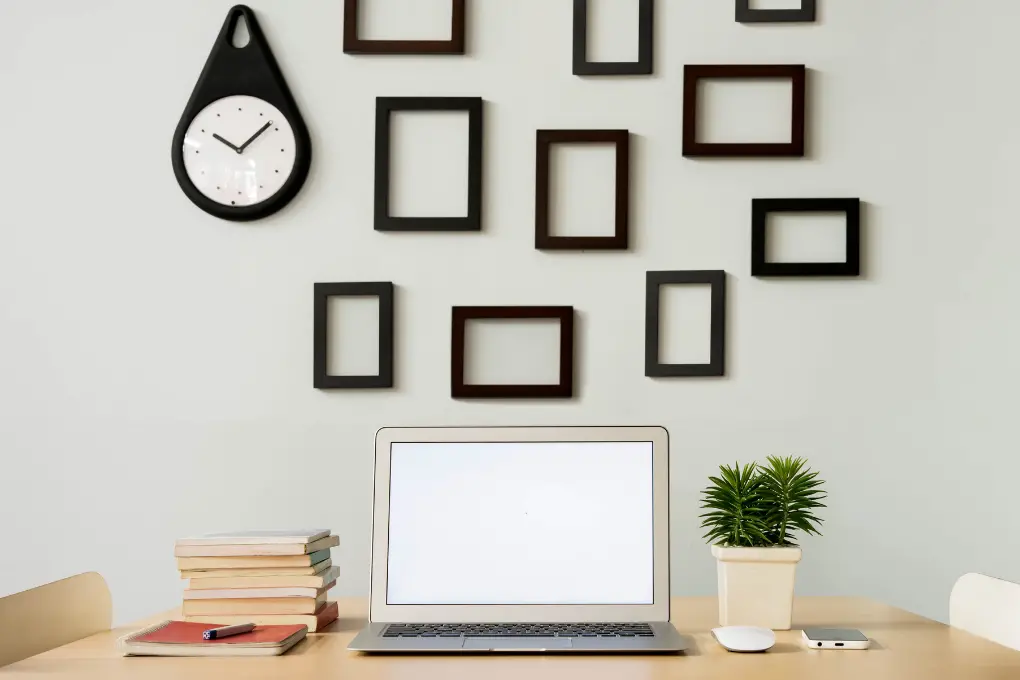
Sometimes, we need to try different things before finding what works best.
That’s why you must experiment with different ideas and see what works best for you.
So, don’t be afraid to test out different ideas. Sometimes, trying something out might actually end up being better than the original idea.
10. Embrace your unique preferences.
Unfortunately, there’s no correct answer when it comes to creating a space for creativity.
The “perfect” space for creativity may not be ideal for another. So, instead of following everything by the book, try to listen to your own needs and preferences. Because, after all, isn’t that how creativity happens?
[divider width=”full”]
Recommended Reading:
- Characteristics of a Know-it-all Person and How to Deal with Them
- 13 “New Month, New Goals” Tips to Make the Rest of This Year Your Best Year Yet
- 9 Surprising Advantages of Creativity in Business
[divider width=”full”]
Final thoughts on how to make space for creativity

Creativity doesn’t happen overnight. It takes time and effort to create a space where you feel inspired and motivated.
But if you follow these ten steps, you’ll be able to address the conditions for creativity and create a space that will inspire you to do things with a more creative approach.
Did you like this article? If so, share this with a friend!
Thanks for reading!
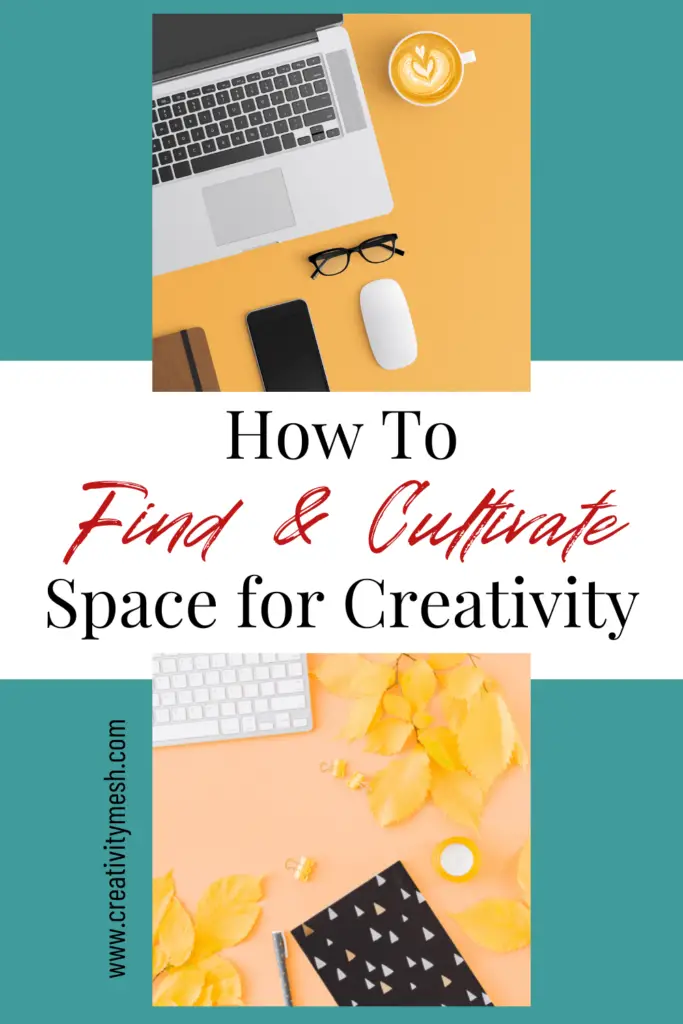
Disclaimer:
This post may contain affiliate links. Meaning, if you click on one of the product links, I will earn a small commission at no cost to you. Thank you for supporting Creativity Mesh.

